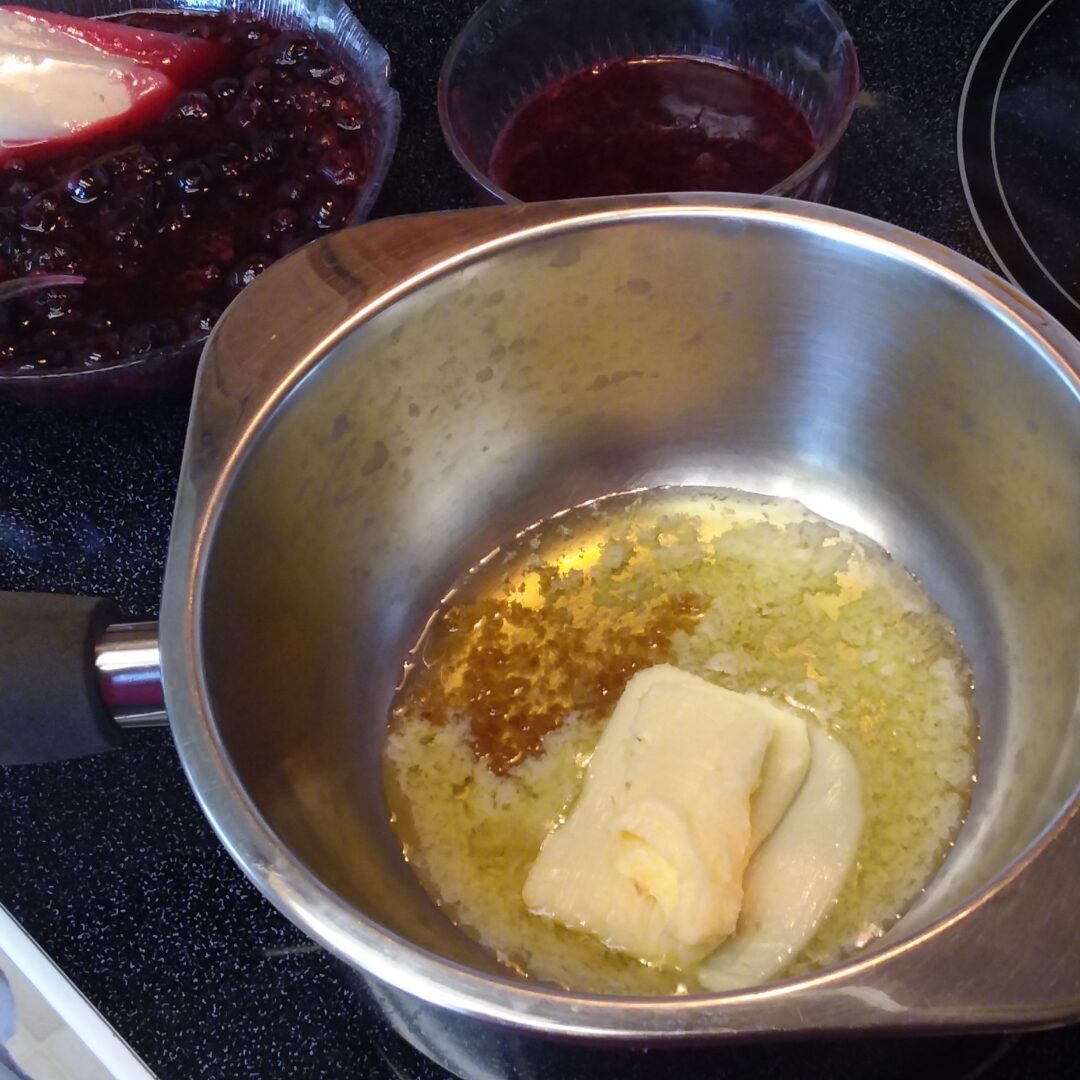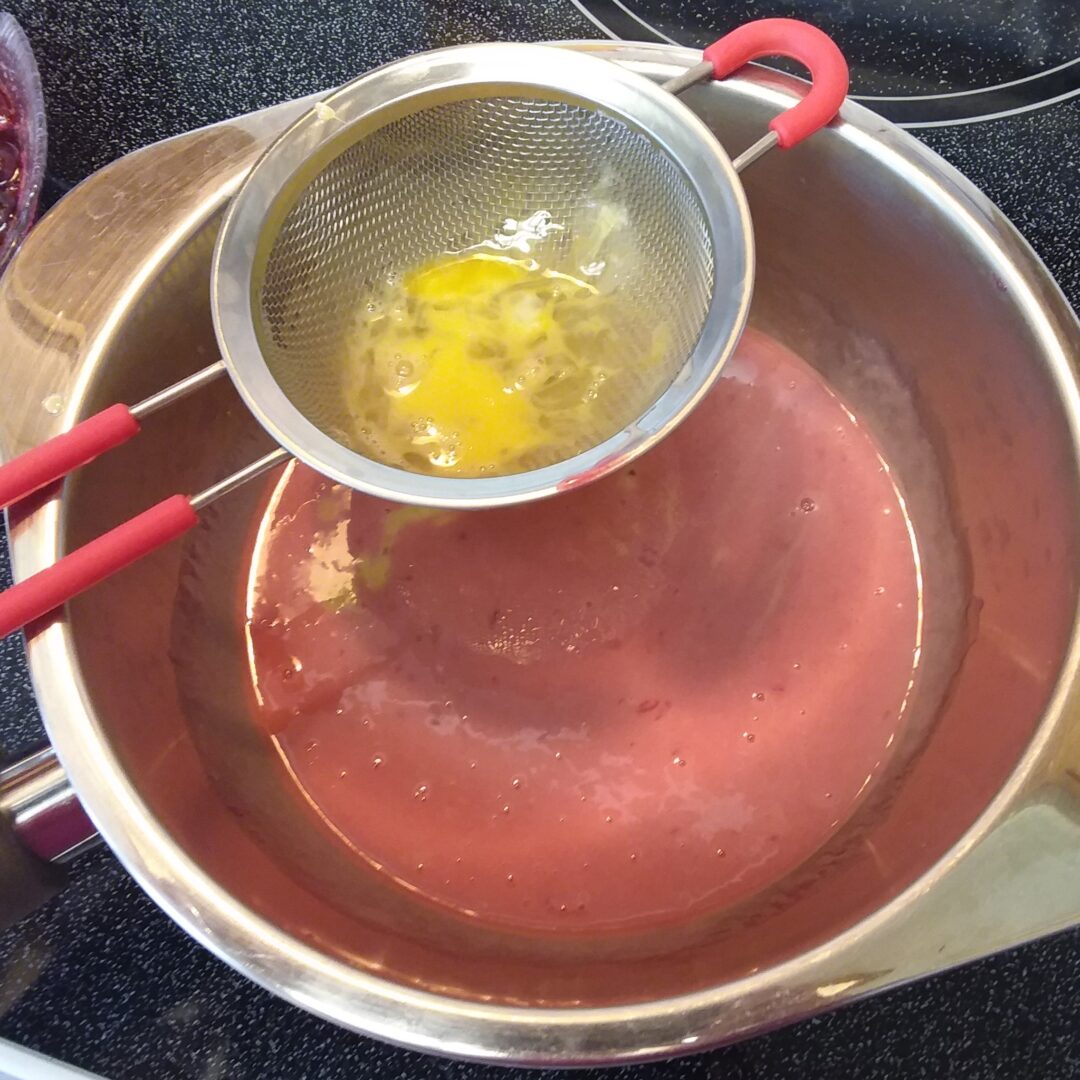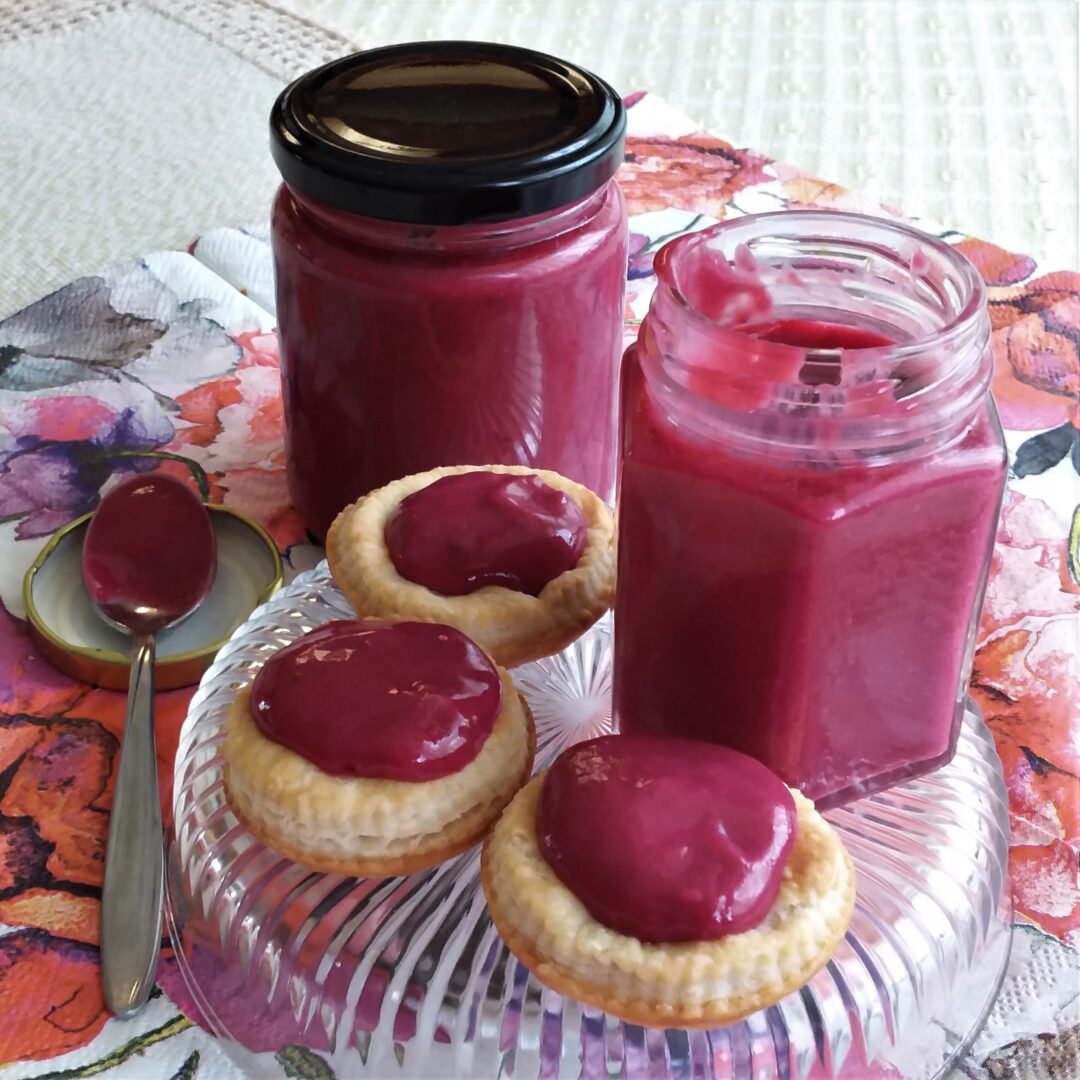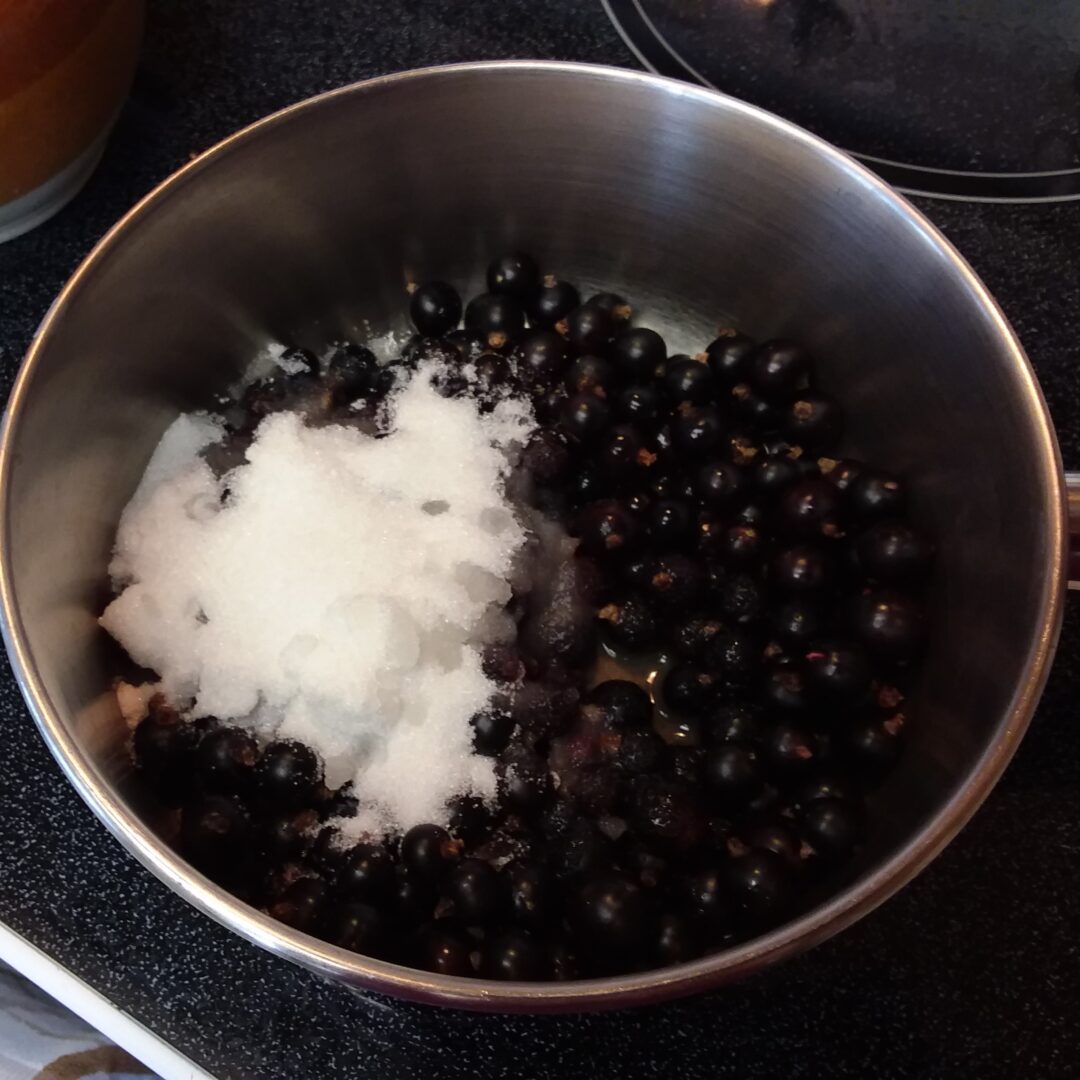A fruit curd is a usually tangy, sweet spread used in cakes, on scones, for tarts and pies and as a topping on ice cream, pancakes or waffles. Lemon curd is probably the most well known flavour. Lemon meringue pie, began as lemon curd topped with a meringue. Black currants are another tangy fruit, currently in season and I have a fresh ripe supply so here we go!
2 cups blackcurrants, fresh or frozen
Zest and juice of half a lemon
3 1/2 Tbsp. butter
1/2 cup sugar
2 extra large eggs
Stop, take a moment and shift your attention. Come into the present moment, releasing all the unimportant thoughts running through your mind. Gather the ingredients and equipment, wash your hands, put on an apron. Take time to set your intention. Pause, take a deep breath and begin.
 In a small double boiler (or a bowl over a small pot containing simmering water), add the lemon juice, zest and butter. Let the butter melt.
In a small double boiler (or a bowl over a small pot containing simmering water), add the lemon juice, zest and butter. Let the butter melt. Usually the sugar would be added at this time but since it was already busy with the currants, transfer 1/4 – 1/3 cup is enough to the butter mixture. That will give enough bulk into which the eggs will be added.
Usually the sugar would be added at this time but since it was already busy with the currants, transfer 1/4 – 1/3 cup is enough to the butter mixture. That will give enough bulk into which the eggs will be added. Crack the eggs into a small container and mix together with a fork. The eggs should be added slowly to the mixture in the double boiler or bowl. Stir well. It is also possible to do this by hand, using a whisk. The reason to do it slowly is so that the eggs do not cook making the sauce lumpy.
Crack the eggs into a small container and mix together with a fork. The eggs should be added slowly to the mixture in the double boiler or bowl. Stir well. It is also possible to do this by hand, using a whisk. The reason to do it slowly is so that the eggs do not cook making the sauce lumpy. Add the cooked currants and sugar into the mixture and stir together. Keep stirring until the mixture thickens and the back of a spoon stays coated, about 30 minutes. It is important that the underside of the mixture does not over cook, so while you can leave the pot alone for short periods of time, keep an eye on what is happening to the mixture.
Add the cooked currants and sugar into the mixture and stir together. Keep stirring until the mixture thickens and the back of a spoon stays coated, about 30 minutes. It is important that the underside of the mixture does not over cook, so while you can leave the pot alone for short periods of time, keep an eye on what is happening to the mixture.



